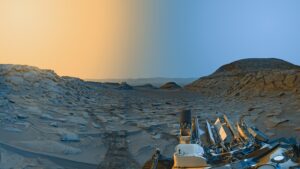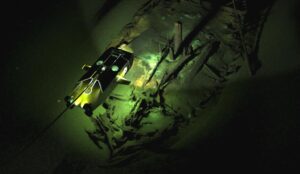You’ve heard the well-worn saying — that we know more about outer space than we do about parts of the ocean floor. With the help of a powerful satellite called SWOT, that might be changing.
The Surface Water and Ocean Topography (SWOT) program is a joint venture between NASA and space agencies from France, Canada, and the UK.
NASA launched the satellite in late 2022. SWOT uses “phase-coherent, wide-swath radar altimetry” to collect its information, according to a recent paper based on the first year of SWOT’s data.

An artist’s rendering of SWOT in orbit. Photo: CNES
Ocean distorted by what’s underneath
If your eyes crossed while reading that, here’s what you need to know — SWOT’s fancy tools map the sea floor by measuring the height of the ocean’s surface. Believe it or not, the surface distorts slightly based on the geography underneath it, and SWOT can spot the minute variations with much more detail than any piece of technology that came before it.
In the paper, published in the journal Science earlier this week, study co-author Yao Yu claimed that “One year of SWOT data offers more detailed information than 30 years of [observations by earlier satellites].”
Yu, a physical geographer at Scripps Institution of Oceanography, used the data to create a hyper-detailed, high-resolution map of the ocean floor. In fact, it’s twice the resolution of previous ocean-floor maps.

Beautiful, no? And also useful. Photo: NASA, SWOT
She and her team were particularly interested in mapping smaller abyssal hills (parallel ridges on the seafloor) and volcanoes previously invisible to lower-resolution satellites.
“Finding these features will really push scientific developments forward, including tectonic theories,” Yu told LiveScience. That’s because the volcanoes and abyssal hills show up in areas of high tectonic activity and on continental margins (where the continental crust meets the ocean crust).
“We’re very interested in [continental margins] because the ocean currents and tides bring nutrients and sediments from the land to the ocean and influence the biodiversity and ecology in the coastal area,” Yu said.
And all this from just the first year of SWOT data. According to NASA, SWOT is nearing the end of its three-year mission, but there are still two years of info for earthbound scientists to sort through. Who knows what they’ll find?






